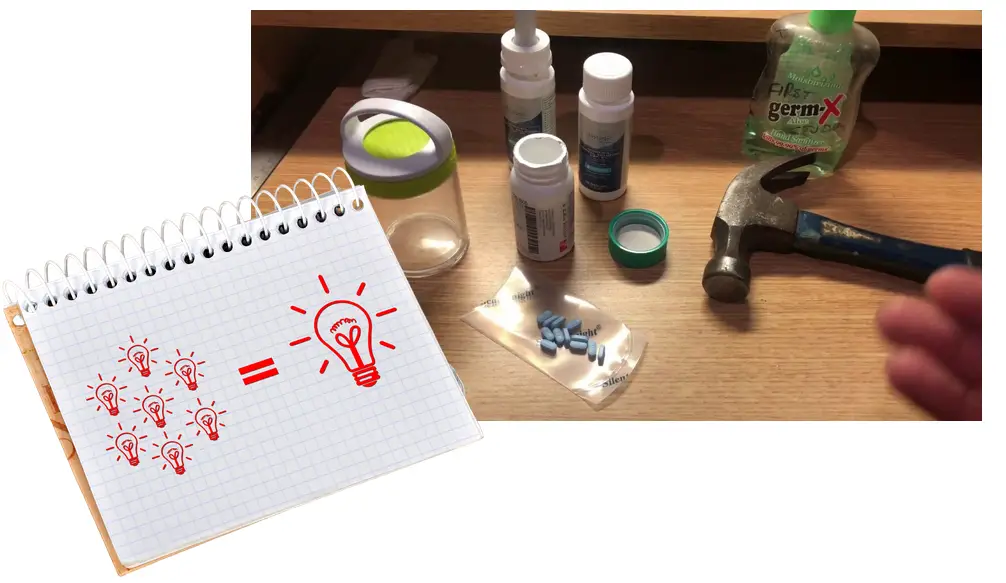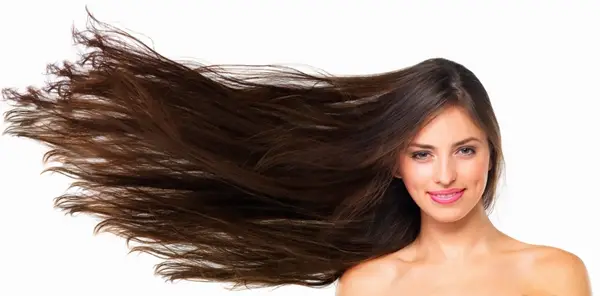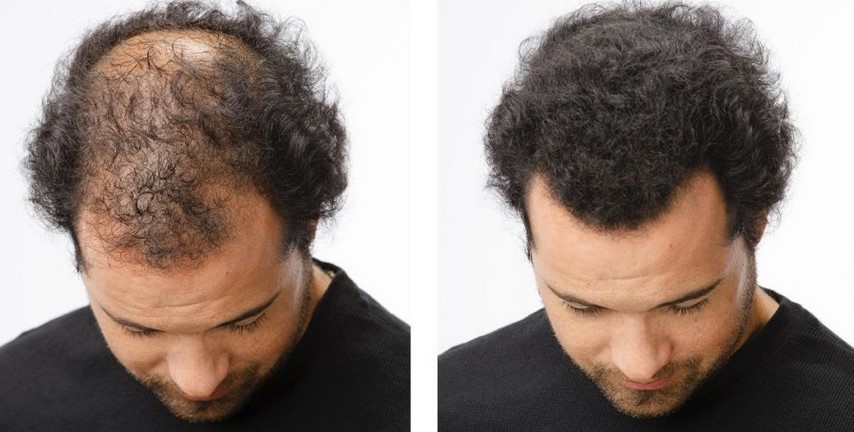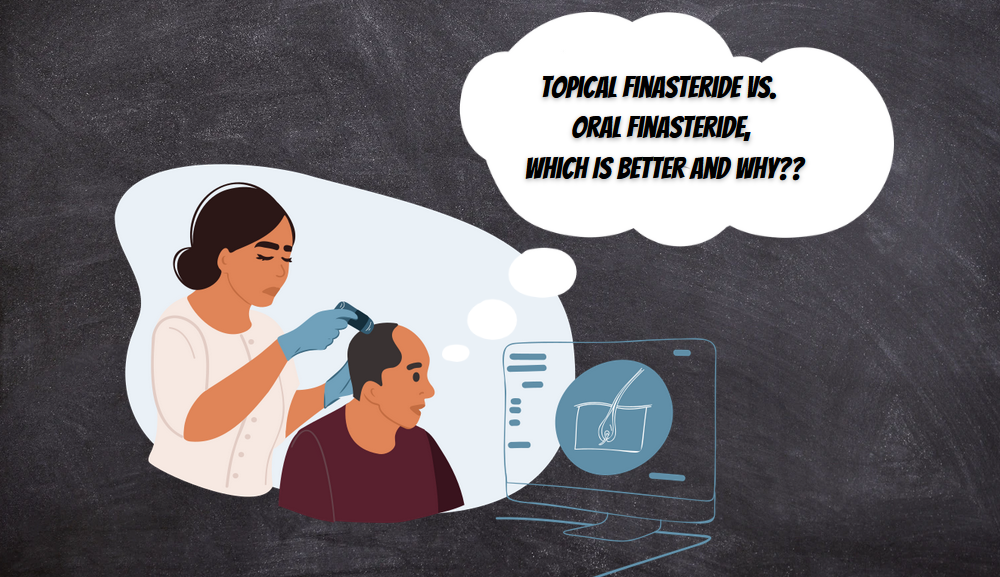Discover the comprehensive guide on ‘How to Make Topical Finasteride’. Learn about its effectiveness, safety concerns, and why buying from a reputable source is a safer option. Explore natural alternatives and FAQs about this hair loss treatment.
Hair loss is a common issue that affects millions of people worldwide. While there are numerous treatments available, one that has gained significant attention is topical finasteride. This treatment method is considered by many as a more convenient and potentially safer alternative to its oral counterpart. But the question that often arises is, can you make your own topical finasteride at home? And more importantly, should you?
In this comprehensive guide, we will delve into the world of topical finasteride, exploring what it is, how it works, and the benefits it offers over oral finasteride. We will also discuss the risks and challenges involved in making your own topical finasteride and why it’s generally not recommended.
For those who are interested in trying out this treatment, we will guide you on how to safely obtain topical finasteride from reputable sources. We will also provide a step-by-step guide on how to use it for hair loss. And for those looking for natural alternatives, we’ve got you covered too.
So, whether you’re new to the world of hair loss treatments or you’re looking for more information on topical finasteride, this guide is for you. Let’s get started!
Explore Our Hair Loss Products
Key Takeaways
In this comprehensive guide, we’ve explored the topic of topical finasteride for hair loss. Here are the key takeaways:
- What is Topical Finasteride?: Topical finasteride is a treatment for hair loss that’s applied directly to the scalp. It works by reducing levels of DHT, a hormone that can cause hair follicles to shrink.
- Making Your Own Topical Finasteride: While it’s technically possible to make your own topical finasteride, it’s generally not recommended due to the risks and challenges involved. It’s safer and more reliable to purchase it from a reputable source.
- Risks of DIY Topical Finasteride: Making your own topical finasteride can lead to inconsistent dosages, potential contamination, and legal issues. It’s also important to remember that finasteride is a potent medication that can cause side effects.
- How to Safely Obtain Topical Finasteride: The safest way to obtain topical finasteride is to buy it from a reputable source, consult a healthcare professional, check the concentration, follow the instructions, and monitor your progress.
- Natural Alternatives to Topical Finasteride: There are several natural alternatives that can support hair health, including saw palmetto, biotin, scalp massage, essential oils, and a healthy diet. However, these may not be as effective as medical treatments like topical finasteride.
Remember, whether you’re using topical finasteride, minoxidil, or a natural alternative, consistency is key. It can take several months to see noticeable results. Always consult with a healthcare professional before starting any new treatment for hair loss.
What is Topical Finasteride?
Topical finasteride is a solution that is applied directly to the scalp to help combat hair loss. It’s a derivative of the drug finasteride, which has been used for years in pill form to treat hair loss in men. The topical version of this medication has gained popularity due to its potential to deliver the benefits of finasteride directly to the scalp, while minimizing systemic exposure and side effects.
Finasteride works by inhibiting the enzyme 5-alpha reductase, which is responsible for converting testosterone into dihydrotestosterone (DHT). DHT is a hormone that can cause hair follicles to shrink, leading to hair loss in men who are genetically susceptible. By reducing the production of DHT, finasteride can help to slow down or even reverse hair loss.
While oral finasteride has been proven to be effective, it can also cause side effects in some men, including sexual dysfunction. This has led many to seek out alternatives, and topical finasteride has emerged as a promising option.
Topical finasteride is applied directly to the scalp, which allows for a higher concentration of the medication to reach the hair follicles. This can potentially lead to better results with fewer side effects. However, it’s important to note that while topical finasteride can be a great option for some, it’s not suitable for everyone and should always be used under the guidance of a healthcare professional.
For a more detailed comparison between topical and oral finasteride, check out our article on Topical Finasteride vs Oral.
In the next section, we will discuss whether you can make your own topical finasteride at home and the risks and challenges involved. Stay tuned!
Can You Make Your Own Topical Finasteride?
The idea of making your own topical finasteride at home might seem appealing. After all, it could potentially save you money and give you more control over the concentration of the medication. However, the process is not as simple as it might seem, and there are several risks and challenges involved.
Firstly, making your own topical finasteride requires a precise balance of ingredients to ensure the solution is effective. Finasteride is not water-soluble, which means it won’t simply dissolve in a liquid. It requires a specific type of solvent, and getting the right concentration is crucial. Too little, and the solution won’t be effective; too much, and you risk side effects.
Secondly, there’s the issue of safety. Handling raw finasteride powder can be risky, especially if you’re not wearing the appropriate protective equipment. Finasteride can be absorbed through the skin, and exposure to the powder can lead to side effects.
Lastly, there’s the question of legality. In many places, it’s illegal to compound your own medications without a license. This includes making your own topical finasteride.
Given these challenges and risks, it’s generally not recommended to make your own topical finasteride. Instead, it’s safer and more reliable to purchase it from a reputable source. If you’re interested in trying topical finasteride, check out our online store where you can buy finasteride online safely and conveniently.
How to Make Topical Finasteride: A Step-by-Step Guide to DIY
Here’s a step-by-step guide on how to make topical finasteride at home:
- Measure out 60 mg of finasteride powder.
- Measure out 60 ml of minoxidil solution.
- Transfer the finasteride powder into a bottle containing the minoxidil solution.
- Securely close the bottle.
- Vigorously shake the mixture for approximately 10 minutes.
- Leave the bottle in a standing position overnight.
- The next day, decant the solution into a separate bottle for use.
If sourcing finasteride powder proves to be a challenge, you can substitute it with 5 mg finasteride pills. In this case, ensure you thoroughly crush the pills into a fine powder to ensure their effectiveness in the solution.
Please note that this guide is a simplified version of the process and making your own topical finasteride should be done with caution. Always consult with a healthcare professional before starting any new treatment for hair loss.
In the next section, we will delve deeper into the reasons why making your own topical finasteride is not a good idea. Stay tuned!
5 Reasons Why Making Your Own Topical Finasteride is a Bad Idea
While the idea of making your own topical finasteride might seem appealing, it’s generally not a good idea. Here are five reasons why:
- Risk of Residue and Contamination: When you’re handling raw finasteride powder, there’s a risk of residue being left on surfaces or in the air. This can lead to accidental exposure, which can cause side effects. There’s also the risk of contamination, which could render the solution ineffective or even harmful.
- Presence of Non-Active Ingredients in Tablets: If you’re thinking of crushing finasteride tablets to make a topical solution, keep in mind that these tablets contain non-active ingredients that are not meant to be applied to the skin. These ingredients could cause irritation or allergic reactions.
- Dangers of Sourcing Raw Powders: Buying raw finasteride powder online comes with its own set of risks. You can’t be sure of the quality or purity of the product, and there’s a risk of it being contaminated with other substances.
- Difficulty in Ensuring Uniform Strength: Ensuring a uniform concentration of finasteride in a homemade solution is challenging. Without the right equipment and expertise, you could end up with a solution that’s too weak to be effective or too strong and risky to use.
- Availability of Legal, Safe, and Reliable Sources Online: With the availability of legal, safe, and reliable sources of topical finasteride online, there’s really no need to take the risk of making your own. You can easily buy finasteride online from reputable sources, ensuring you get a product that’s safe and effective.
Given these reasons, it’s clear that making your own topical finasteride is not the best idea. Instead, consider buying from a reputable source. Check out our online store for safe and reliable options.
In the next section, we will guide you on how to safely obtain topical finasteride. Stay tuned!
How to Safely Obtain Topical Finasteride
If you’re interested in trying topical finasteride for hair loss, it’s crucial to obtain it safely and legally. Here’s how:
- Buy from Reputable Sources: The safest way to obtain topical finasteride is to buy it from a reputable source. Look for online pharmacies or health platforms that are licensed and have good customer reviews. These platforms should provide information about the product, including its concentration and ingredients.
- Consult a Healthcare Professional: Before starting any new medication, it’s always a good idea to consult a healthcare professional. They can provide personalized advice based on your health history and current medications. They can also monitor your progress and help manage any potential side effects.
- Check the Concentration: Topical finasteride comes in different concentrations, typically ranging from 0.005% to 0.1%. A healthcare professional can help determine the right concentration for you based on your needs and tolerance.
- Follow the Instructions: Once you’ve obtained your topical finasteride, it’s important to follow the instructions for use. This typically involves applying the solution to the scalp once a day. Avoid contact with the eyes and wash your hands after application.
- Monitor Your Progress: Keep track of your progress by taking photos of your scalp before starting treatment and at regular intervals thereafter. This can help you and your healthcare professional assess the effectiveness of the treatment.
When choosing a topical finasteride product, it’s important to consider the ingredients. Here’s a comparison of the active and inactive ingredients in some popular topical finasteride products:
| Product | Active Ingredients | Inactive Ingredients |
|---|---|---|
| Hims Topical Finasteride & Minoxidil Spray | 0.3% finasteride, 6% minoxidil | Alcohol (ethanol), propylene glycol, citric acid |
| Happy Head Topical Finasteride & Minoxidil | 0.3% finasteride, 8.0% minoxidil, retinoic acid | Not listed |
| Finasteride 0.1% and Minoxidil 6% Topical Gel | 0.1% finasteride, 6% minoxidil | Hydroxypropyl cellulose, ethanol, propylene glycol, water |
| FINAGEN 50 ml – Topical Finasteride for Hair Loss | 0.025% finasteride, 5% minoxidil | Ethanol 96%, distilled water, propylene glycol, polysorbate 20 |
| Keeps Topical Finasteride and Minoxidil Gel | 0.25% finasteride, 5% minoxidil | Not listed |
Remember, while topical finasteride can be an effective treatment for hair loss, it’s not suitable for everyone and should always be used under the guidance of a healthcare professional.
Ready to get started? Check out our online store where you can buy finasteride online safely and conveniently.
In the next section, we will provide a step-by-step guide on how to use topical finasteride for hair loss. Stay tuned!
How to Use Topical Finasteride for Hair Loss
Once you’ve safely obtained your topical finasteride, it’s important to use it correctly to maximize its effectiveness and minimize potential side effects. Here’s a step-by-step guide on how to use topical finasteride for hair loss:
- Prepare Your Scalp: Before applying the solution, make sure your scalp is clean and dry. You can apply it after a shower, but make sure your hair is completely dry.
- Measure the Right Amount: Typically, you’ll need to apply 1 ml of the solution to your scalp. Most products come with a dropper or applicator that makes it easy to measure the right amount.
- Apply the Solution: Part your hair in the area of thinning and apply the solution directly to the scalp. Try to spread it evenly over the affected area.
- Massage It In: After applying the solution, gently massage it into your scalp with your fingertips. This can help ensure that it’s evenly distributed and reaches the hair follicles.
- Let It Dry: Allow the solution to dry completely before styling your hair or going to bed. This can help prevent it from rubbing off on your pillow or other surfaces.
- Wash Your Hands: After applying the solution, wash your hands thoroughly to remove any residue.
Remember, consistency is key when it comes to hair loss treatments. Apply the solution once a day, or as directed by your healthcare professional, and be patient. It can take several months to see noticeable results.
For those who are interested in a combination treatment, we also offer a product that combines topical finasteride with minoxidil, another proven hair loss treatment. Check out our Topical Finasteride and Minoxidil product for more information.
In the next section, we will explore natural alternatives to topical finasteride. Stay tuned!
Natural Alternatives to Topical Finasteride
While topical finasteride can be an effective treatment for hair loss, it’s not the only option. For those who prefer natural remedies or want to avoid potential side effects, there are several natural alternatives that can help promote hair growth and reduce hair loss.
- Saw Palmetto: This plant extract is often used in supplements for hair loss. It’s believed to work in a similar way to finasteride, by blocking the conversion of testosterone into DHT.
- Biotin: Also known as vitamin B7, biotin is essential for healthy hair, skin, and nails. While a deficiency is rare, supplementing with biotin can help improve hair health and strength.
- Scalp Massage: Massaging your scalp daily can help stimulate blood flow to the hair follicles, promoting hair growth.
- Essential Oils: Certain essential oils, like rosemary and peppermint, have been shown to promote hair growth when applied to the scalp.
- Healthy Diet: A diet rich in protein, vitamins, and minerals can support hair health. Foods like eggs, berries, spinach, and fatty fish are particularly beneficial.
Remember, while these natural alternatives can support hair health, they may not be as effective as medical treatments like topical finasteride. It’s always a good idea to consult with a healthcare professional before starting any new treatment for hair loss.
Interested in learning more about natural alternatives to finasteride? Check out our article on Finasteride Natural Alternatives.
In the next section, we will answer some frequently asked questions about topical finasteride. Stay tuned!
Frequently Asked Questions
In this section, we’ll address some of the most frequently asked questions about topical finasteride.
Q: Can I use topical finasteride if I’m already using minoxidil?
A: Yes, topical finasteride can be used in conjunction with minoxidil. In fact, some studies suggest that using both treatments together can lead to better results than using either one alone. If you’re interested in a combination treatment, check out our Topical Finasteride and Minoxidil product.
Q: Can women use topical finasteride?
A: Topical finasteride is not typically recommended for women, especially those who are pregnant or planning to become pregnant, as it can cause birth defects. However, some studies suggest it may be beneficial for postmenopausal women with hair loss. Always consult with a healthcare professional before starting any new treatment.
Q: How long does it take to see results from topical finasteride?
A: Like most hair loss treatments, topical finasteride requires patience. It can take several months to see noticeable results. Consistency is key, so make sure to apply the solution as directed, even if you don’t see immediate improvements.
Q: Can I make my own topical finasteride at home?
A: While it’s technically possible to make your own topical finasteride, it’s generally not recommended due to the risks and challenges involved. For more information, refer to our section on why making your own topical finasteride is a bad idea.
Q: Are there natural alternatives to topical finasteride?
A: Yes, there are several natural alternatives that can help promote hair growth and reduce hair loss. These include saw palmetto, biotin, scalp massage, essential oils, and a healthy diet. For more information, check out our section on natural alternatives to topical finasteride.
Conclusion
In conclusion, topical finasteride is a promising treatment for hair loss that offers several advantages over oral finasteride, including reduced systemic side effects. However, it’s not a DIY project. Making your own topical finasteride at home can be risky and is generally not recommended. Instead, it’s safer and more reliable to purchase it from a reputable source.
If you’re considering topical finasteride, it’s important to consult with a healthcare professional. They can provide personalized advice based on your health history and current medications. They can also monitor your progress and help manage any potential side effects.
While topical finasteride can be effective, it’s not the only option for hair loss. There are several natural alternatives that can support hair health, including saw palmetto, biotin, scalp massage, essential oils, and a healthy diet. However, these may not be as effective as medical treatments like topical finasteride.
Remember, consistency is key when it comes to hair loss treatments. Whether you’re using topical finasteride, minoxidil, or a natural alternative, it’s important to use the treatment as directed and be patient. It can take several months to see noticeable results.
Ready to take the next step in your hair loss treatment journey? Check out our online store where you can buy finasteride online safely and conveniently. For more information on hair loss and treatment options, visit our homepage.
- AI Powered Bald Filter Online 2024: See Yourself with No Hair! - January 19, 2024
- Harklinikken Bad Reviews 2024: Analyzing Negative Feedbacks - January 18, 2024
- How to Get the Alex Eubank Hair | Step-By-Step Tutorial 2024 - January 18, 2024







